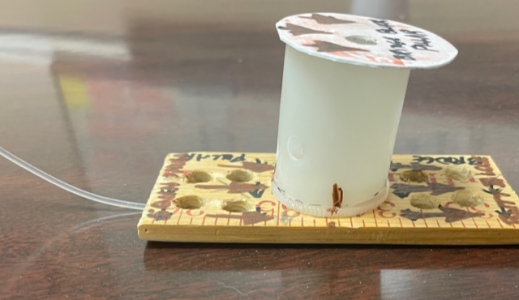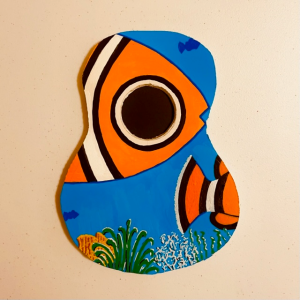Oldscruggsfan
Well-known member
Originally, I mistakenly posted this thread at Luthier's Lounge and will now delete it from that forum.
I plan to replace the pulling-away and partially-broken bridge on a Famous (Kiwaya laminate) FU120 Pineapple uke and am seeking expert guidance:
1. On the original bridge pictured here, the G-slot to A-slot span is 40mm. Should I worry about finding a replacement bridge with that same slot span, or will any soprano-spec bridge work?
2. Initial online research indicates that the least-costly CONUS source to buy a bridge that most closely resembles the one originally installed by Kiwaya is Mainland Ukes. I'm about a 90 minute drive from Uke Republic but don't see a "parts" section on their webpage. I've emailed Kiwaya but am not holding my breath on a timely response, particularly in regard to a model they apparently no longer manufacture.
Please PM if I'm mistaken about Mainland or if you have a similar bridge you're willing to sell (either new or used).

Thank you,
Clark
I plan to replace the pulling-away and partially-broken bridge on a Famous (Kiwaya laminate) FU120 Pineapple uke and am seeking expert guidance:
1. On the original bridge pictured here, the G-slot to A-slot span is 40mm. Should I worry about finding a replacement bridge with that same slot span, or will any soprano-spec bridge work?
2. Initial online research indicates that the least-costly CONUS source to buy a bridge that most closely resembles the one originally installed by Kiwaya is Mainland Ukes. I'm about a 90 minute drive from Uke Republic but don't see a "parts" section on their webpage. I've emailed Kiwaya but am not holding my breath on a timely response, particularly in regard to a model they apparently no longer manufacture.
Please PM if I'm mistaken about Mainland or if you have a similar bridge you're willing to sell (either new or used).
Thank you,
Clark









